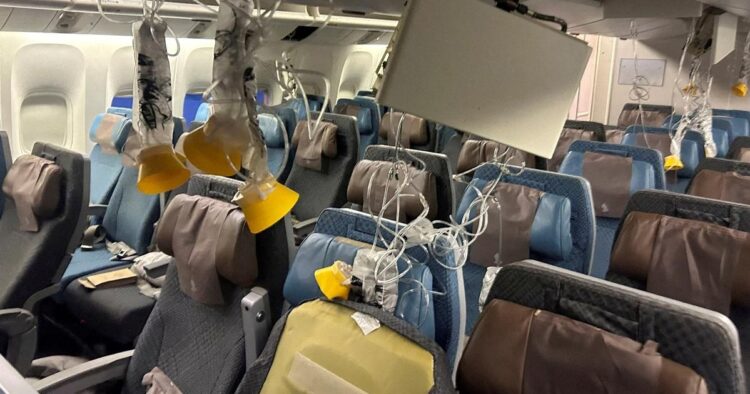On Tuesday, Singapore Airlines Flight SQ321, traveling from London to Singapore, faced severe turbulence while flying over the Irrawaddy Delta region of Myanmar. The turbulence caused the aircraft to rapidly climb and descend twice within 62 seconds, leading to chaos among the passengers.
Sadly, 73-year-old Briton Geoffrey Kitchen suffered a heart attack and died during the incident, marking the first fatality in an SIA flight since the SQ006 crash in Taiwan in October 2000. Several other passengers were injured as a result of the turbulence.
During the breakfast service on the flight, the plane began to experience sudden turbulence. The pilot quickly declared a medical emergency and decided to divert the aircraft to Bangkok’s Suvarnabhumi Airport.
The Boeing 777-300ER, carrying 211 passengers and 18 crew members, made an emergency landing in Bangkok at 3:45 pm local time (4:45 pm Singapore time).
ALSO READ: “Singapore Airlines Flight Hits Severe Turbulence: Over 20 Passengers in Intensive Care”
Flight tracking data from Flightradar24 revealed that the plane climbed from its cruising altitude of 37,000 feet to 37,400 feet, then dropped to 36,975 feet, and finally returned to its cruise altitude.
Although the actual altitude change was minor, the rapid transitions caused significant disruption in the cabin. Earlier reports suggested a more dramatic descent from 37,000 feet to 31,000 feet, but Flightradar24’s data indicated that this was a controlled descent by the pilots to assess the situation before diverting to Bangkok.
A commercial pilot with over 20 years of experience explained that the rapid climb introduced positive G-forces, making passengers feel pressed down into their seats. The subsequent rapid descent created negative G-forces, causing unrestrained passengers and loose items to be thrown upwards.
This turbulence cycle happened twice, exacerbating the situation and causing more injuries and damage in the cabin. Passengers reported being thrown against the ceiling and then back onto the floor, with one passenger, Teandra Tukhunen, describing how she was jolted awake by being flung to the roof and then to the floor.
The aircraft’s quick access recorder captured G-force data, providing valuable information for the investigation.
Flightradar24 data showed that the Boeing 777 first climbed at a rate of 1,664 feet per minute, descended at 1,536 feet per minute six seconds later. Then climbed again at 900 feet per minute three seconds after that, and then descended at 1,536 feet per minute ten seconds later.
Singapore’s Transport Minister Chee Hong Tat stated that investigators from the Transport Safety Investigation Bureau are examining data from the cockpit voice recorder and the flight data recorder.
A study by the United States National Transportation Safety Board from 2009 to 2018 found that passengers injured in turbulence-related incidents were often those moving to or from the toilet or seated but not wearing seat belts.
This incident highlights the unpredictability and danger of severe turbulence, emphasizing the importance of remaining seated and belted up whenever possible during flights. The investigation will continue to analyze the flight data to understand better what caused this severe turbulence and how similar incidents can be prevented in the future.

















Comments